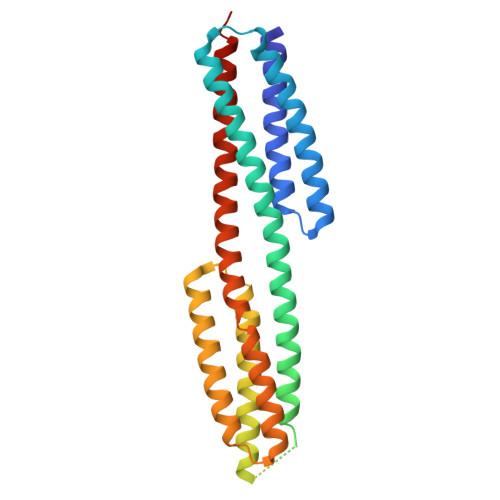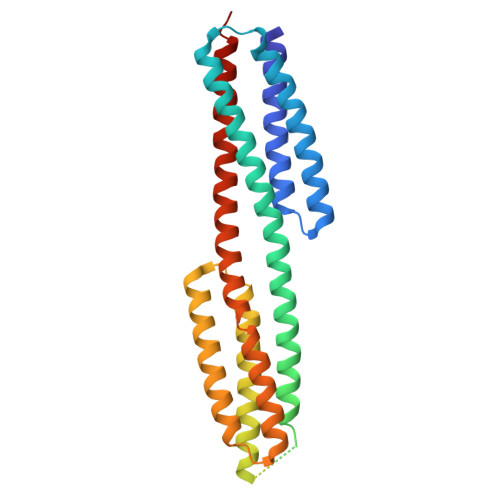Structural analysis of sensor domains from the TMAO-responsive histidine kinase receptor TorS
Moore, J.O., Hendrickson, W.A.(2009) Structure 17: 1195-1204
- PubMed: 19748340
- DOI: https://doi.org/10.1016/j.str.2009.07.015
- Primary Citation of Related Structures:
3I9W, 3I9Y - PubMed Abstract:
Histidine kinase receptors respond to diverse signals and mediate signal transduction across the plasma membrane in all prokaryotes and certain eukaryotes. Each receptor is part of a two-component system that regulates a particular cellular process. Organisms that use trimethylamine-N-oxide (TMAO) as a terminal electron acceptor typically control their anaerobic respiration through the TMAO reductase (Tor) pathway, which the TorS histidine kinase activates when sensing TMAO in the environment. We have determined crystal structures for the periplasmic sensor domains of TorS receptors from Escherichia coli and Vibrio parahaemolyticus. TorS sensor domains have a novel fold consisting of a membrane-proximal right-handed four-helical bundle and a membrane-distal left-handed four-helical bundle, but conformational dispositions differ significantly in the two structures. Isolated TorS sensor domains dimerize in solution; and from comparisons with dimeric NarX and Tar sensors, we postulate that signaling through TorS dimers involves a piston-type displacement between helices.
Organizational Affiliation:
Department of Biochemistry and Molecular Biophysics, Columbia University, New York, NY 10032, USA.
















